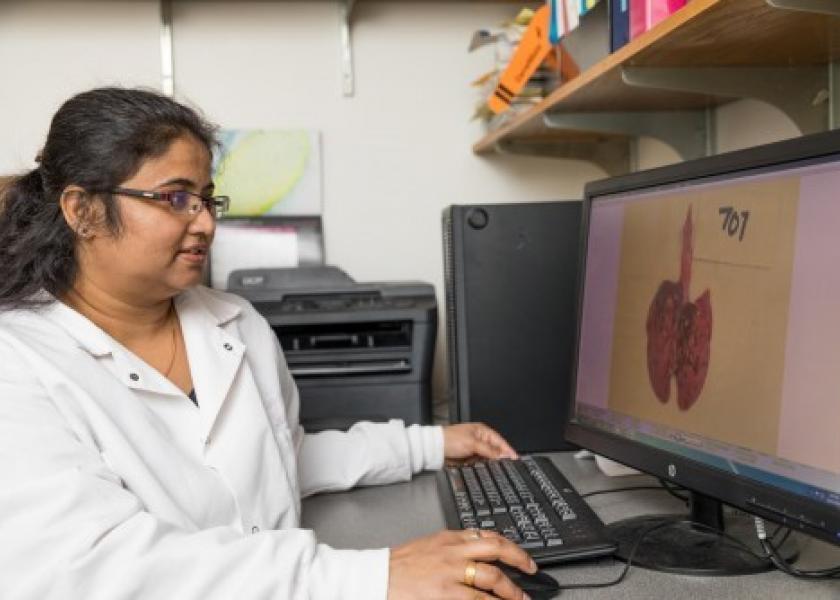Influenza D Remains Somewhat Mysterious

In 2011, researchers isolated an unknown flu virus, later categorized as influenza D virus (IDV), in a diseased pig. Since then, some of the same research group identified influenza D antibodies in cattle, goats, sheep and horses, and proved that the guinea pig can serve as an animal model to study the virus. Radhey Kaushik, PhD, a Suth Dakota State University professor and assistant department head who participated in the research notes that finding antibodies in the blood does not mean the virus is causing disease, but that the animals are being exposed to the virus. Work has shown though, that although the virus can infect pigs, cattle likely serve as the primary reservoir for influenza D and it probably plays a role in the bovine respiratory disease (BRD) complex.
In 2016, the International Committee of Taxonomy of Viruses officially classified the Influenza D virus as a new genus, Orthomyxovirdae, with a single species, because of its distinctness from influenza types A, B and C. Continued research revealed two lineages of the virus, with one living in cattle while the other spreads to both cattle and pigs.
The SDSU team recently received a $2.6 million National Institutes of Health Research Project grant to evaluate the likelihood of the virus becoming a risk to humans. While the influenza D virus has not been shown to cause disease in humans, the researchers note that humans do not have pre-existing immunity to influenza D. So the researchers will focus on how the virus replicates, in preparation for development of vaccines or antiviral drugs if needed.
In a 2015 study from Mississippi State University, researchers demonstrated that IDV causes a mild respiratory disease upon experimental infection of cattle and can be transmitted effectively among cattle by in-pen contact. “Although the disease observed was mild, IDV induced neutrophil tracking and epithelial attenuation in cattle trachea, which could facilitate co-infection with other pathogens, and in doing so, predispose animals to bovine respiratory disease,” the researchers reported.
Ben Hause, PhD, served on the team that first identified IDV, has studied the virus as a graduate student at South Dakota State University and as a faculty member at Kansas State University. He now serves as vice president of research, development and diagnostics at Cambridge Technologies. Hause presented information on IDV during a recent Academy of Veterinary Consultants (AVC) conference.
Researchers using polymerase chain reaction (PCR) screening of samples from 40 Nebraska farms found 98% of calves positive for IDV, Hause says. In a Mississippi test, researchers found IDV in 29% of calves showing clinical signs of BRD, and just 2% of healthy calves, suggesting the virus could play a role in BRD.
Scientists have developed an IDV vaccine, and Kansas State University researchers conducted a challenge study with 65 six-month-old calves previously determined to be seronegative for IDV. They split the calves into three groups. One group received the vaccine and viral challenge, another received the vaccine and no viral challenge and the third group received no vaccine and no viral challenge. In that trial, IDV titers were lowest in the group with vaccine and no challenge, intermediate in the group with vaccine and challenge and highest in the group with the viral challenge and no vaccine.
Researchers also noted that IDV, by itself, is associated with mild respiratory disease. Hause notes that clinical cases of BRD typically involve more than one pathogen, including several viruses and bacteria. How much of a role IDV plays when combined with other BRD viruses and bacteria remains unclear.
Hause summarized with these key points.
- IDV is widespread in cattle worldwide.
- Bovines serve as primary reservoirs for the virus.
- IDV alone causes mild BRD.
- IDV likely is a significant part of the BRD complex.
- An inactivated IDV vaccine can offer some protection.
For more on influenza D and other viruses involved in respiratory disease, read these articles from BovineVetOnline:







